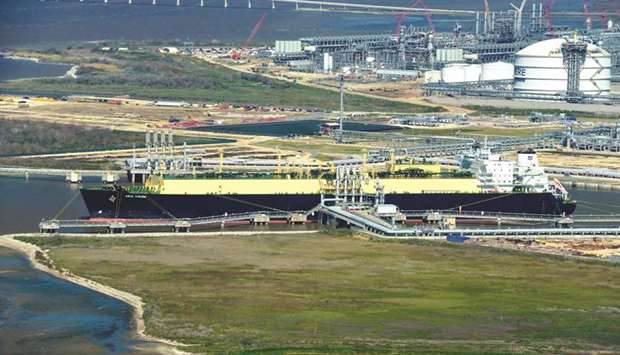The massive ships that transport one of the world’s coldest cargoes are finally hot again.
Shipping prices for liquefied natural gas tankers have risen to a three-year high, spurring vessel operators to speed up tankers so they can reach customers more quickly. Ships that generally travel 15 to 20 knots are “accelerating and reaching levels not seen in several years,” according to a report by the Pira unit at S&P Global Platts.
Driving the market is record demand in China, which overtook South Korea as the second-biggest importer of LNG and may become the largest by 2025. Boosting mileage for vessels is a boon for their owners, which reap stronger shipping rates, and for LNG exporters from Qatar to the US “It’s been very busy, driven by a massive increase in Chinese demand, which is pulling LNG from the US,” said Paul Wogan, chief executive officer of Gaslog Ltd, which owns 27 LNG tankers. “That’s great for shipping demand, such long voyages and increasing mileages.”
The newest LNG ships can reach a speed of 21 knots, faster than most oil tankers can go and a heady clip for a ship that can be longer than three football fields. Speeding them up reverses years in which operators moved LNG at slower speeds to conserve fuel and cope with a supply glut.
At the end of 2016, about 478 tankers worldwide are able to carry natural gas in its liquid form, chilled to minus 161 degrees Celsius (minus 261 Fahrenheit). Ship usage is on the rise and more are travelling from the Atlantic to the Pacific, said Debbie Turner, director of shipbroker SSY Gas.
The voyage length of a US LNG tanker is more than double the industry average because of Chinese demand and increasing supplies from Cheniere Energy Inc’s Sabine Pass terminal in Louisiana, Wogan said. Cheniere wasn’t immediately available for comment.
While South America, a closer market for US LNG, got most of the early shipments of the nation’s gas from shale deposits, South Korea and China have since accelerated purchases.
China’s LNG buying spree is not surprising, given its policy to shift away from coal, said Warren Patterson, a commodity strategist at ING Groep NV in Amsterdam. Asia is an important market for LNG from the US, with about 70% of exports going to the region in October, he said. The expansion of the Panama Canal in June 2016 means tankers from the Gulf of Mexico have been able to shave 11 days off a typical round trip to Asia. That means Cheniere has been able to benefit from the increase in Chinese demand.
“It certainly is a positive development for US LNG exporters, who are increasingly looking more at Asia as a home for their product,” Patterson said.
Other than US LNG, supplies from storage tanks at European terminals has increased, in part driven by the start of Russia’s Yamal LNG project in Siberia, which requires cargoes to be transferred from tankers at European ports during the winter months when a shorter Northern Sea Route is blocked by ice.
The market recovery is likely to continue despite a slight cool-down in LNG prices and shipping rates at the start of the year, Gaslog’s Wogan said. Seasonality in the LNG shipping market, with softer demand in the northern hemisphere spring and autumn, is likely to become less pronounced over the next 12 months.
“It will be interesting to see how the demand continues over the next two to three months but I’d say it’s very encouraging,” he said.
An LNG carrier sits docked at the Cheniere Energy terminal in this aerial photograph taken over Sabine Pass, Texas (file). Driving the market is record demand in China, which overtook South Korea as the second-biggest importer of LNG and may become the largest by 2025.

SPEEDY


